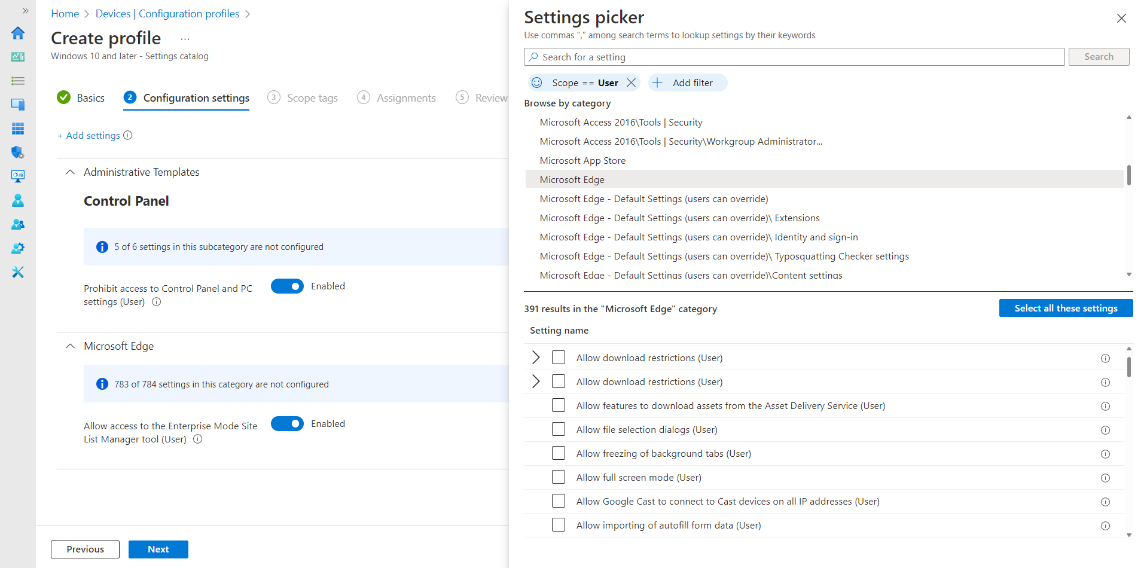Microsoft Intune user scope configuration for Azure Virtual Desktop multi-session VMs is now GA

Today we're happy to announce Microsoft Intune user scope configuration for Azure Virtual Desktop multi-session Virtual Machines (VMs) on Windows 11 is now generally available.
In April we announced general availability of device scope configuration for Windows 11 and Windows 10 multi-session. Enabling you to manage VMs using Microsoft Intune settings catalog and the Endpoint security blade. This new update enables you to configure user scope policies using settings catalog, configure user certificates, and configure PowerShell scripts in user context.
The following capabilities are now generally available on Azure Virtual Desktop with Microsoft Intune:
- Manage device and user scope configuration for multi-session session host VMs using the settings catalog and Endpoint Security in the Microsoft Endpoint Manager (Intune) admin center.
- Easily create new endpoint security policies, like you do for physical devices, by choosing the Windows 10, Windows 11, and Windows Server platform.
- Manage multi-session VMs created in the Azure Public and Azure Government (US GCC High and DoD environments) clouds.
Here is an example of configuring user settings in Microsoft Intune settings catalog.
This is an example of creating a user scoped security profile in Intune Endpoint security blade.
Getting started
To get started, follow the instructions to use Azure Virtual Desktop multi-session with Intune which will guide you in creating new configurations.
Learn more about the recommended ways to manage your Azure Virtual Desktop session hosts with Microsoft Intune on our manage session host with Microsoft Endpoint Manager page.
Published on:
Learn moreRelated posts
From Backlog to Delivery: Running Scrum in Azure DevOps
This is a practical, end-to-end guide to run Scrum with Azure DevOps — from backlog grooming through sprint delivery and continuous deployment...
Azure SDK Release (November 2025)
Azure SDK releases every month. In this post, you'll find this month's highlights and release notes. The post Azure SDK Release (November 2025...
Microsoft Purview: Information Protection-Azure AI Search honors Purview labels and policies
Azure AI Search now ingests Microsoft Purview sensitivity labels and enforces corresponding protection policies through built-in indexers (Sha...
Soluzione Earns Microsoft Solutions Partner Designation for Data & AI (Azure)
Soluzione has been a Microsoft partner for over a decade – a journey that began with Microsoft Silver Partnership, progressed to achieving Mic...
What’s New with Microsoft Foundry (formerly Azure AI Foundry) from Ignite 2025
Microsoft Ignite 2025 just wrapped up, and one of the biggest themes this year was the evolution of Azure AI Foundry, now simply called Micros...

